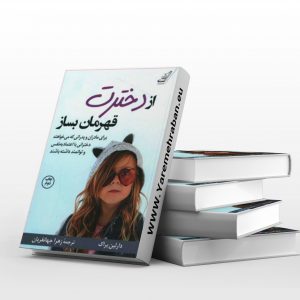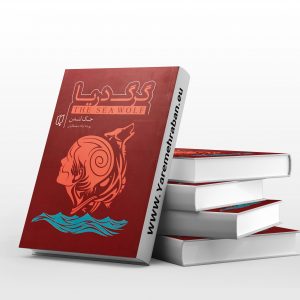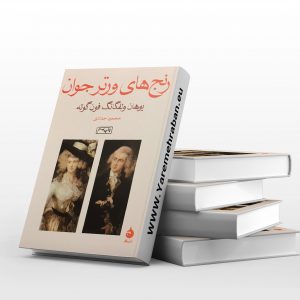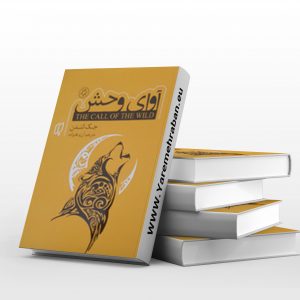Description
The stories of Kelileh and Demneh are the work of Abu al-Ma’ali Nasrullah Munshi.
When you hear the name of the book Kelileh and Demneh, you will surely remember the Persian book of your primary school and you will remember some stories of Kelileh and Demneh. In this article, we are going to talk more about this fascinating book that has many unspoken secrets. So if you want to know more about this exquisite work, join us.
Whose effect is Kelileh and Demneh?
Kelileh and Demneh is one of the world’s literary masterpieces that dates back more than 2000 years. This work was not written in Iranian from the beginning and was written by an Indian philosopher named “Badia” and after writing it was dedicated to the Shah of India, “Debshlim”.
It is interesting to know that this story book was originally written in Sanskrit and was translated into Middle Persian by Nasrullah Munshi during the Sassanid period.
Mojtaba Minavi, one of the greats in the field of writing and translation as well as editing, commented on the book Kelileh and Demneh as follows: “They have translated it and passed it on to future generations so that it can be read by the people and they can learn from its wisdom and advice.”
Kelileh and Demneh in simple language with fluent translation
Abu al-Ma’ali Nasrullah al-Munshi translated this instructive novel into a simpler language using the free translation method in Middle Persian. Regarding the type of translation and writing of this work, we must keep in mind that the author, by preserving the context of the original book, has presented a new work that fits the Persian language to his audience. Perhaps this is why, if you ask an audience about the author of this novel, you will not hear a name other than Nasrullah Munshi.
The interesting thing we need to know about the translation of this valuable work is that, until years ago, people considered the only translation of Kelileh and Demneh to be the translation of Nasrullah Munshi. This is while the Persian translation of the manuscript left by “Mohammad Ibn Abdullah Bukhari” has been left in the library of Istanbul for many years, which has changed the opinion of the people about the free translation of Nasrullah Munshi; Because the best thing that can be found about it is that Mohammad Ibn Bukhari translated all the writings of the original language of the book into Persian without touching the main story, which provoked the opinion of many literary experts about Kelileh and Demneh.
Which poet has put Kelileh and Demneh in order?
The story of Kelileh and Demneh caused a great deal of controversy in Iran during the Sassanid period, and due to the translation of this work into the Pahlavi language at the request of the Shah, Rudaki, the famous poet of that time, accepted the mission to put this work in order.

Kelileh and Demneh Rudaki, twelve thousand verses of the poem
The remarkable thing about Rudaki’s verses is that he added and subtracted points in most of his verses and did not adhere much to the main text of the story. However, this poetic work is one of Rudaki’s most valuable works.
Unfortunately, at present, out of a total of 12,000 rudaki bits, only 129 bits are available, which have been collected from various sources and various old books by the efforts of Master Nafisi.
The stories of Kelileh and Demneh, the famous lovely duchess!
You must have been a curious article about the animals in this book by now. As the name of the book indicates, most of the instructive stories are about the events of two jackals named Kelileh and Demneh.
The greatest feature of the book Kelileh and Demneh is the interconnected anecdotes between animals that appear together in a community, talk, sometimes fight, sometimes help each other and even conspire against each other. In parts of the story, we see a court set up where animals gather to find justice. In general, everything that exists in a human society exists in the kidneys, but with a different appearance and a different society!
Of course, keep in mind that not all chapters of Kelileh and Demneh prose are written by animals, but in many anecdotes, the author only intended the story to be instructive, and the author sometimes ends the story with metaphors and various symbols. رساند.
How many chapters does the book Kelileh and Demneh have?
Kelileh and Demneh instructive anecdotes, according to the translation of the Pahlavi text, include 10 chapters, in each of which interesting and exciting stories about different events occur.
– Lion and cow Bob
– Colored pigeon bob
– Bob ape and back stone
– Chapter of prudence
– Bob mice and cats
– Bob Boom and Crow
– Bob Shah and Penzooh
– Bob Turg-Jackal
– Bob Blood and Brahmins
– Bob Shah Mushan and his ministers
An anecdote from Kelileh and Demneh to ancient prose
Kelileh and Demneh novel has many interesting stories. The good thing about the stories in this novel is that they are short and fluent; Because the audience understands the author’s words by reading it once. In the following, we will review one of the most famous anecdotes of Kelileh and Demneh.
Brought; It was a small business that planned to travel. The merchant had a hundred mans of iron, which he entrusted to a friend and left; But the friend sold the loan and spent the money. The merchant went to him one day to ask for his loan iron. The man said: I put your iron in the barn of the house and I had finished taking care of it, but there lived a mouse that left everything to eat until I became aware of it.
The merchant replied to the man: You are right! Mice love iron very much and their teeth are able to hit it. His friend was happy and thought that the merchant was convinced and took his heart from the iron and believed his story. So he said: Be a guest at my house today. The merchant said: I will come back tomorrow. The merchant left the man’s house and when he reached the alley, he took the man’s son with him and hid him. When they left, there was no sign of the boy. So they called in the city to follow the boy.
“I saw an eagle taking a child,” said the merchant. The man shouted that it was a lie and impossible, how do you say he took a child eagle? The merchant laughed and said: In a city where a hundred-man mouse can eat iron, can not a 20-kilogram child eagle be caught? The man knew what the story was and in response the merchant said: Yes, he has not eaten a mouse! Open the boy and tie the iron. Truly, there is nothing worse than being kind and generous in speech and ashamed and ashamed in action!
Stories of Kelileh and Demneh for children
Kelileh and Demneh stories are not only attractive for adults. Because every single instructive story in this novel can be useful for many children and adolescents.
Of course, today, and considering that attractive audio books and many animations have been made based on the main stories of Kelileh and Demneh for children; Children and adolescents are expected to become more familiar with the stories of this famous novel. Of course, keep in mind that Kelileh and Demneh stories are presented to children in a shorter form than the main stories and with smoother and simpler sentences. For example, the story written above about the story of the merchant and his clever friend will be rewritten for children so that they can better understand the story:
Once upon a time, he lived in a corner of a poor merchant city. The merchant of our story decided to travel one day in order to change his living conditions, but since his only capital in life was 100 man-iron, he decided to entrust the iron to his friend and travel safely. But after the merchant left the city, his friend sold all the iron and kept his money.
Days passed and finally Bazargan returned from the trip and went to his friend’s house to receive his loans. The ignorant friend replied to the merchant to take back the iron: “My friend, the next day when you left my house and I put the iron on loan in the warehouse, I found out that the mouse that lived in my warehouse had eaten all the iron.”
After hearing his friend’s words, Bazargan said: You are right, mice love iron. It took a long time and the merchant’s friend felt that the merchant believed the story of the iron being eaten by the mice until one day the man’s son went missing.
The man searched the city for his son until Ibnkeh reached Bazargan and informed him about his missing son. Bazargan replied to his friend: I saw an eagle that took a boy with it! I think that’s your son. The man complained to the merchant about how he might take a boy eagle! The merchant laughed and said that in a city where mice eat iron, eagles also take boys with them, so it is not surprising!
The man, who was ashamed and ashamed of his behavior, said to Bazargan: You are right, hand over my son to you, and I will return all my iron to you! They are right that; There is nothing more difficult than to speak easily of dignity and greatness when speaking, but to be ashamed and ashamed of what happens!
1- Introducing the book on YouTube
2- Introducing the book in Aparat














Reviews
There are no reviews yet.